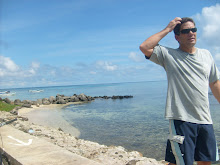Costa Rica Scores Highest Marks for Environmental Protection
Here is how Costa Rica fared in various categories (scale of 1 to 100):
EPI - 90.5
Environmental Health - 93.2
Ecosystem Vitality - 87.7
Environmental Burden of Disease - 1.0
Water (humans) - 92.8
Air Pollution (humans) - 83.8
Air Pollution (Ecosystem) - 99.3
Water (Ecosystem) - 78.5
Biodiversity & Habitat - 48.0
Productive Natural Resources - 97.1
Climate Change - 98.3
Forestry - 100.0
Fisheries - 99.1
Agriculture - 92.0
Adequate Sanitation - 90.6
Drinking Water - 94.9
Urban Particulates - 83.8
Indoor Air Pollution - 75.8
Local Ozone - 100.0
Regional Ozone - 100.0
Sulfur Dioxide Emissions - 98.6
Water Quality - 57.1
Water Stress - 100.0
Conservation Risk Index - 95.0
Effective Conservation - 15.9
Critical Habitat Protection - 75.0
Marine Protected Areas - 6.0

You can view the entire EPI rankings as well as statistics on Costa Rica and all other countries ranked at the EPI Website.
Also, Costa Rica’s own Cocos Island is a candidate for inclusion in the new list of the Natural Wonders of the World, which will be announced this year on July 7th at the Official Declaration Ceremony in Lisbon, Purtugal. You can place your vote for Cocos Island at the Natural Wonder Official Website. As of the last update on January 24th, Cocos Island was ranked 5th of 77 candidates.




